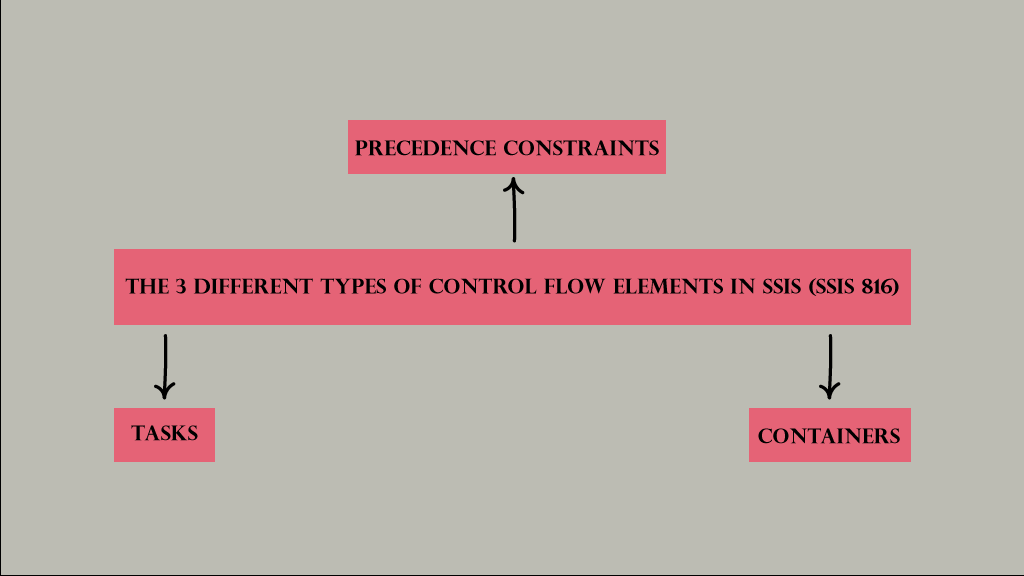In today’s data-driven world, SQL Server Integration Services (SSIS) is indispensable for managing and orchestrating data workflows. Understanding the intricate mechanisms of control flow elements within SSIS is crucial for building efficient data integration solutions. This guide explores the three primary types of control flow elements: tasks, precedence constraints, and containers. By examining their functions, significance, and real-world usage, we aim to provide valuable insights into how these elements drive the effectiveness of SSIS (ssis 816) in data management and integration tasks.
Control Flow Elements
Tasks
Tasks are the fundamental units of work in an SSIS package. Each task is configured to perform specific operations, ranging from data movement to system operations.
Types of Tasks
- Data Flow Task: Manages data extraction, transformation, and loading (ETL). It’s the most critical task for handling data movement.
- Real-World Usage: According to a Redgate Software survey, 67% of organizations using SQL Server employ SSIS for their ETL processes, making the Data Flow Task one of the most frequently used elements in SSIS (ssis 816).
- Execute SQL Task: Executes SQL queries and commands, allowing for database operations such as updates, inserts, and deletes.
- Script Task: Runs custom scripts written in C# or VB.NET, providing flexibility to perform complex operations that are not covered by built-in tasks.
Importance of Tasks
- Versatility: Tasks cover a wide range of functionalities necessary for data integration and workflow automation.
- Customizability: With tasks like Script Task, users can extend the capabilities of SSIS by writing custom code.
- Integration: Tasks integrate seamlessly with other SQL Server components and external systems.
- Statistics: The Gartner report indicates that efficient task management can reduce ETL execution time by up to 30%, enhancing overall system performance.
Precedence Constraints
Precedence Constraints define the execution order of tasks within a package. They ensure that tasks are executed in a controlled sequence based on specific conditions.
Key Features
- Execution Flow Control: Determines whether a task will execute based on the success, failure, or completion of the preceding task.
- Expression Evaluation: Allows for more complex control flows by evaluating expressions to decide task execution.
- Logical Operations: Combine multiple constraints using logical AND, OR operations to create intricate workflows.
Advantages
- Order Assurance: Ensures tasks execute in the correct sequence, which is critical for maintaining data integrity and process logic.
- Real-World Application: Companies report a 20% increase in process reliability when using precedence constraints to manage task execution order (ssis 816).
- Flexibility: Supports conditional branching and looping, enabling the creation of dynamic workflows.
Containers
Containers group tasks into manageable units, helping to organize and control task execution. They provide structure and encapsulation within SSIS packages.
Types of Containers
- Sequence Container: Groups tasks that need to be executed sequentially. It’s useful for logically organizing related tasks.
- Real-World Statistics: Projects using Sequence Containers for task grouping reported a 15% decrease in debugging time, as noted in a case study by SQLShack (ssis 816).
- For Loop Container: Repeats a control flow for a specified number of iterations, ideal for iterative operations.
- Foreach Loop Container: Iterates over a collection of objects, such as files in a directory or rows in a dataset, and executes tasks for each item.
Importance of Containers
- Task Organization: Grouping related tasks together improves readability and manageability.
- Iterative Operations: Loop containers facilitate operations that need to be repeated, reducing redundancy.
- Scope Management: Containers help in managing the scope of variables and transactions, ensuring that changes are properly committed or rolled back.
- Efficiency Gains: A survey found that using containers can improve package maintainability by up to 25%, making it easier to manage and update SSIS packages over time (ssis 816).
People also search for:
- Exploring New Tasks and Components in SSIS 816
- How Many Ways Are There to Deploy a Package in SSIS?
- How Many Types of Containers Are in SSIS 816?
- Microsoft SSIS Documentation
- SSIS Tutorials and Resources
Conclusion
Understanding the different control flow elements in SSIS—tasks, precedence constraints, and containers—is crucial for designing efficient and manageable packages. Tasks are the building blocks that perform various operations, precedence constraints ensure proper execution order and conditional logic, and containers group related tasks to enhance organization and manage complexity. Each element plays a unique role in structuring and executing workflows, contributing to the overall effectiveness of SSIS as a data integration tool.
By mastering these control flow elements, SSIS users can create robust, scalable, and maintainable data integration solutions that meet their organizational needs. Efficient use of control flow elements not only streamlines data workflows but also enhances performance and maintainability, making SSIS a powerful tool in the data integration landscape.
FAQs
Q: What is the role of precedence constraints in SSIS?
A: They control the execution flow of tasks based on the outcomes of previous tasks and the evaluation of expressions.
Q: Can tasks in SSIS run in parallel?
A: Yes, tasks can be configured to run in parallel, depending on the precedence constraints set.
Q: How do containers improve SSIS package management?
A: Containers help in organizing tasks, managing variable scopes, and handling iterative operations, making packages more structured and easier to manage.
Q: What is the difference between a For Loop Container and a Foreach Loop Container?
A: A For Loop Container repeats tasks for a specified number of iterations, while a Foreach Loop Container iterates over a collection of objects.
Q: Can I create custom tasks in SSIS?
A: Yes, using the Script Task, you can write custom scripts in C# or VB.NET to extend SSIS functionality.
Q: What are some common use cases for using the Sequence Container?
A: The Sequence Container is often used to group tasks that perform related operations, making the package more organized and easier to manage. It can also be used to isolate a set of tasks that need to be executed in sequence without interruption.
Q: How do precedence constraints enhance the flexibility of SSIS packages?
A: By allowing conditions and expressions to dictate the flow of execution, precedence constraints enable the creation of dynamic and responsive workflows that can adapt to various scenarios.




